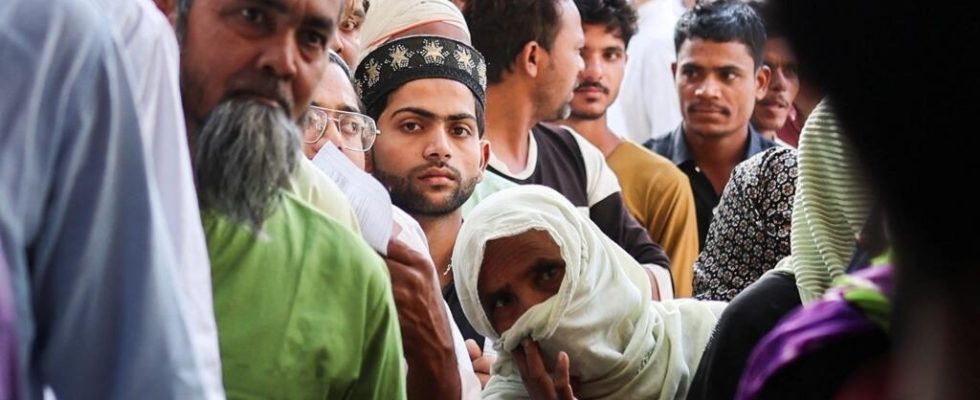From this Friday, April 19, and for the next six weeks, 970 million Indians are called to the polls for the legislative elections. The party or coalition that gets the majority of seats in the Lok Sabha will form the next government. And it is in Kairana, on the western border of the state of Uttar Pradesh, north of New Delhi, that the first voters are speaking out.
3 mins
With our special correspondent in Kairana, Clea Broadhurst
The voters of Kairana (State of Uttar Pradesh), where it is currently the Prime Minister’s Bharatiya Janata Party (BJP) Narendra Modi who governs, are the first to vote at the start of the first phase of the parliamentary elections in India. There will be seven phases in all, until June 1 inclusive.
At the exit of a school transformed into a polling station, on this April 19 holiday for the opening of the elections, the people who came to the polls willingly show their index fingers tinted with blue, the ultimate proof of vote. “ It is our duty to vote! It’s for our Prime Minister, we must vote if we want the government we want “, explains Asgar.
For Khushnuma, a young woman who lives more than 100 kilometers from Kairana, it was important to take this path to exercise her right: “ It’s my responsibility to vote. That’s why I came early this morning! My hope is that we will be at peace and live in harmony. »
If Uttar Pradesh is governed by the BJP, some voters, like Mohamad, believe it is time for change, because in his eyes the government is only divide Hindus and Muslims : “ It is important to vote, because we must save our Constitution. Today, there are many problems in our country: inflation, unemployment, education, farmers… There are too many problems, that’s why we have to vote. »
Also listenIndia: why Narendra Modi’s economic successes are insufficient
Two major coalitions face to face
Significant resources were mobilized for these elections; 41 helicopters, 84 special trains and nearly a million vehicles were deployed to transport election and security staff. The vote is staggered over 44 days for logistical and security reasons. Millions of electronic voting machines will be used and will allow voters to choose between several candidates… or to choose none.
As India is a multi-party democracy, the elections will see a range of national and regional parties competing for votes. But two main coalitions compete directly to lead the nation: the National Democratic Alliance (NDA), led by Modi’s BJP, and a 26-party coalition, called the Indian National Developmental Inclusive Alliance (INDIA), led by the main opposition party, the Indian National Congress (INC).
In all, 21 states in India are voting on April 19 for 102 seats out of 543 seats. In Uttar Pradesh, we vote for 8 seats out of the 80 granted to the state in total. For these 8 seats, there are 80 candidates, including seven women. Voting takes place in 7,693 polling stations. The results will all be given on June 4.
Read alsoIndia’s parliamentary elections: the rise and fall of the world’s largest democracy
